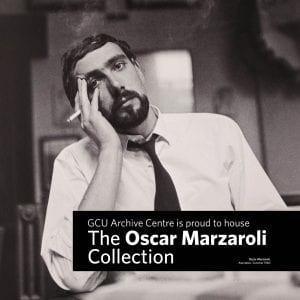Author Archives: GCU Archives
What we do
My brother is getting married this weekend, and along with revising my best man speech (gulp), I’m also anticipating a lot of relatives and newly minted in-laws asking the perennial question; what is it you do again?
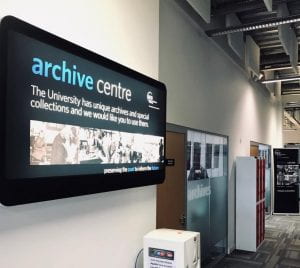
GCU Archive Centre reading room
As ever, I’ll smile and reply that I work as an archive assistant. They’ll nod, pause and then ask, but what do you do? And that’s where it gets tricky.
Getting social in the archives
The life of a project archivist can sometimes be quite isolated. You can spend hours on your own in the archives arranging and cataloguing records. But sometimes a project comes along where you get to interact more with people, as I have discovered working on the Social Enterprise Collection (Scotland).

Working on records in the Archive Centre
Glasgow Caledonian University (GCU) Archive Centre holds the Social Enterprise Collection (Scotland) which is a national archive of records from organisations and individuals involved in the social enterprise movement across Scotland. Continue reading
A stitch in time: the story of a D-Day flag
The Glasgow and West of Scotland College of Domestic Science (affectionately known as the ‘Dough School’) may not immediately come to mind when one thinks of D-Day. Yet in the form of the flag carried into battle by the 308 Battery 128th (Highland) Field Regiment, Royal Artillery 51st Division, the College was represented.
Gifts that keep on giving
To meet someone gifting to the Archive Centre is (at least for this writer) in parts agreeable, humbling, and slightly nerve-inducing – exacerbated manifold if the materials are of personal or sentimental value.
The neatly folded and dry-cleaned blazer which Doreen Blanche brought to the reading room had belonged to her late mother and was the first of its kind received to Glasgow Caledonian University Archive Centre. Pale blue with purple stripes, it was worn by students of the Glasgow and West of Scotland College of Domestic Science – colloquially and affectionately referred to as the ‘Dough School’. Later renamed The Queen’s College, Glasgow, it is a founding institution of GCU.
Want to know more about GCU’s history – read on…
A Wellcome Trust Research Resources Project
Our Wellcome Trust Research Resources funded project “Poverty, Health, Diet and Education in Glasgow: from Domestic Science to the Allied Health Professions, 1875-1993” is now finished. With its completion comes three comprehensive online catalogues, a glimpse into the archives via a new online exhibition and a set of blogs and tweets built up over a one year period. The door is now open for you to delve in and better understand the amazing story of one strand of our founding institutions. Continue reading
Banner Tales – Glasgow and the Anti-Apartheid Movement – 13th October 2018
On a rainy Saturday afternoon stands were assembled, banners unfurled and hung. Pencils sharpened and leaflets laid. All in preparation for the attendees, as they arrived to mellifluous South African music that melded soon with memories regaled.
This was Banner Tales, an event organised by Glasgow Museums, Glasgow University Geography Department, Glasgow Caledonian University Archive Centre, ACTSA Scotland and Nelson Mandela Scottish Memorial Foundation with the support of the Raphael Samuel History Centre. The two banners under discussion were from the Scottish Anti-Apartheid Archive held in GCU Archive Centre and Glasgow Life. Each authentic to the time period and rich in colour and history.
One of many events throughout October as part of Black History Month, it also coincided with the week of the 25th anniversary of Nelson Mandela’s visit to Glasgow on the 9th of October 1993 to receive the freedom of nine cities.
What’s in a name? Royal connection of the Queen’s College, Glasgow
A Wellcome Trust Research Resources Project
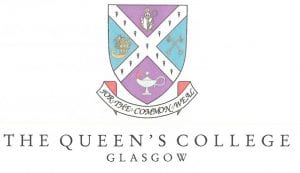
It was during its centenary year in 1975 that the College received its royal title, the Queen’s College, Glasgow. Before that it was called the Glasgow and West of Scotland College of Domestic Science (Incorporated), a name dating back to 1908 when the two Glasgow cookery schools amalgamated to form the College. At that time it described very precisely (if not concisely) the function of the College, but after the passage of sixty seven years the name no longer fitted its purpose. Continue reading
Electrifying Domestic Science – guest blog by Eleanor Peters
Eleanor Peters is a University of Aberdeen PhD student. She has been using the Queen’s College, Glasgow (formerly the Glasgow and West of Scotland College of Domestic Science) records, which are in the final stages of being catalogued as part of the Wellcome Trust Research Resources Project. Many thanks to Eleanor for sharing the fascinating information she has found from the records. I wonder what other areas of research the catalogue will unlock when it goes live later this year. (KM)
Over the last year, I have had the pleasure of visiting the Glasgow Caledonian University (GCU) archive several times to carry out research for my PhD. As a part-time research student in the second year of my studies, my thesis is still very much ‘taking shape’; however, it was the records for the Glasgow and West of Scotland College of Domestic Science (GWSCDS) which inspired the subject matter of my PhD: Electricity and Domestic Science Institutes in Scotland and England c.1910-1939.
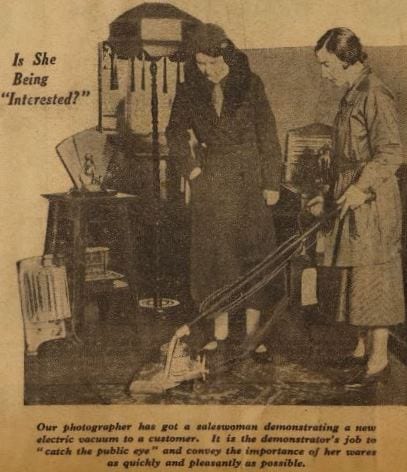
Demonstrating an electric vacuum cleaner, Newspaper cutting February 1934.
Women played an integral role in promoting the uptake of gas appliances in Britain in the late 1800s; large audiences gathered to watch female appliance demonstrators (also known as ‘Lady Demons’!) cook using gas stoves.[1] I wondered if women had also played an active role in demonstrating electrical appliances; being a student at the University of Aberdeen, I naturally turned my attentions to electrical appliance demonstrations in Scotland first. Continue reading
Tailored to fit
As part of our Wellcome Trust Research Resource Project and on-going best practice we recently completed a process of measuring and boxing our run of Glasgow Cookery Books. The process began with the precise measuring of each individual tome, which could sometimes vary by only a few millimetres. This was done with a tried and trusted old-school wooden book measuring device, with a movable gauge on a fixed mm ruler base, to establish the width, length and height of each individual item.

The goal was to create a bespoke box for each book, to fit tightly, thereby ensuring full protection from outside elements and to prevent movement and possible damage inside the box while handling.
This list of measurements was sent to Conservation By Design Ltd who then constructed a range of their Premium Drop Spine boxes, in acid and lignin free archival folding boxboard.
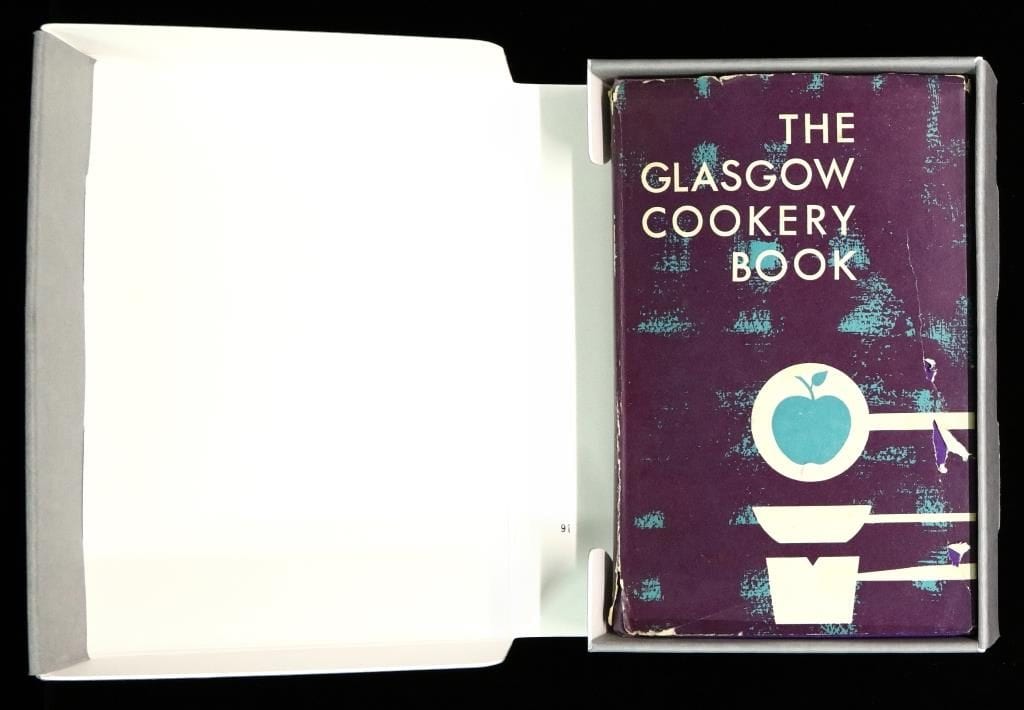 The act of fitting our boxes into their new attire was a strangely pleasurable one, or it was, after the initial dread that I may have got the measurements off by a millimetre or two. Everything fitted snugly and our books are now as safe and secure and smart as they ever have been. The boxes even smell good; but that’s a whole other blog…
The act of fitting our boxes into their new attire was a strangely pleasurable one, or it was, after the initial dread that I may have got the measurements off by a millimetre or two. Everything fitted snugly and our books are now as safe and secure and smart as they ever have been. The boxes even smell good; but that’s a whole other blog…
Simon Docherty – Archive Assistant
